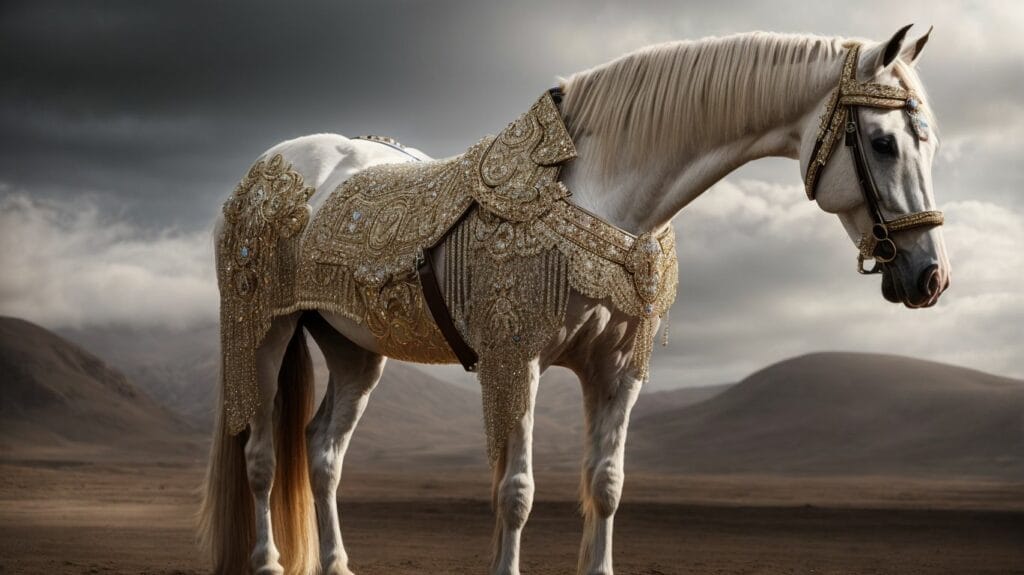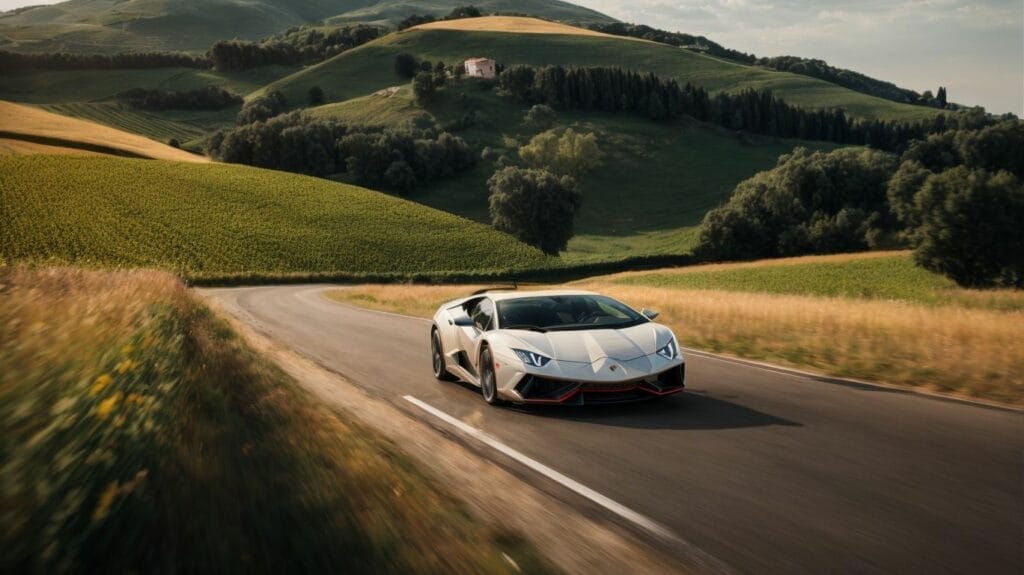Horses have been prized and treasured animals throughout history, with some reaching astronomical prices. But what exactly makes a horse expensive? While it may seem like a simple question, several factors contribute to a horse’s value, including their pedigree, training and performance record, physical characteristics, and breed popularity.
The most expensive horse in the world is determined by their purchase price, which can range from a few thousand dollars to millions. According to the equestrian lifestyle magazine Horse & Hound, the top five most expensive horses in the world are Fusaichi Pegasus, Shareef Dancer, Seattle Dancer, Meydan City, and Green Monkey. These horses have fetched prices ranging from $40 million to an astonishing $70 million.
While breed and pedigree play a significant role in a horse’s price, other factors also impact their value. These include age, gender, training and performance, and health and veterinary records. A horse with a prestigious lineage and a successful racing or competition record is likely to command a higher price than one without.
Owning the most expensive horse in the world comes with a hefty price tag. Along with the initial purchase price, there are ongoing costs for training and maintenance, competition and show fees, and veterinary care. The cost of owning the most expensive horse can easily reach millions, making it a luxury reserved for the ultra-wealthy.
In conclusion, the most expensive horse in the world is determined by several factors, including pedigree, training and performance, and breed popularity. These factors, along with ongoing costs of ownership, contribute to a horse’s value and make them prized possessions for their wealthy owners.
Key Takeaways:
- A horse’s pedigree, training, physical characteristics, and breed popularity contribute to its high price tag.
- The most expensive horse in the world is Fusaichi Pegasus, followed by Shareef Dancer, Seattle Dancer, Meydan City, and Green Monkey.
- Factors like breed, age, gender, training, and health affect a horse’s price, and it can cost millions to own and maintain the most expensive horse.
What Makes a Horse Expensive?
Have you ever wondered what makes a horse worth millions of dollars? In this section, we will explore the various factors that contribute to the high price tag of the most expensive horses. From prestigious pedigrees to exceptional training and performance records, we will delve into the key aspects that determine the value of a horse. Additionally, we will also discuss the importance of physical characteristics and breed popularity in determining the overall cost of a horse. So, let’s take a closer look at what truly makes a horse expensive.
Pedigree
A horse’s pedigree is a key factor in determining its value. Pedigree refers to the horse’s lineage or ancestry, specifically the bloodlines of its parents and ancestors. A horse with a prestigious pedigree, such as being descended from champion racehorses or highly successful show horses, will often command a higher price. The reputation and success of the horse’s relatives can greatly influence its value in the market. Buyers are often willing to pay a premium for a horse with a strong pedigree, as it is seen as an indicator of potential talent and performance.
Training and Performance Record
A horse’s training and performance record plays a crucial role in determining its value and price. The table below highlights the key aspects of this:
| Training and Performance Record |
|---|
| Consistent wins in competitions |
| Achievement of performance goals |
| High rankings and placements |
| Record of successful performances |
| Training by renowned professionals |
| Demonstrated potential for future success |
This information showcases the importance of a horse’s training and performance history in determining its worth. Buyers and sellers consider factors such as competition results, achievements, and the expertise of trainers when assessing the value of a horse.
Physical Characteristics
- Conformation: A horse’s physical characteristics, including proportions, balance, and correctness of limbs.
- Movement: Evaluating how a horse moves, including their stride, suspension, and overall athleticism.
- Coat color: Certain coat colors, such as rare or desirable variations, can increase a horse’s value.
- Height: Some disciplines have preferences for certain height ranges, which can impact a horse’s price.
- Temperament: A horse with a calm and trainable temperament is often more desirable.
Breed Popularity
The demand for a horse breed greatly affects its price. Certain breeds are highly sought after for their unique characteristics and abilities, leading to an increase in their value.
Below is a table showcasing the popularity of various horse breeds:
| Breed | Popularity |
| Thoroughbred | High |
| Quarter Horse | High |
| Arabian | High |
| Friesian | Moderate |
| Andalusian | Moderate |
| Morgan | Moderate |
| Appaloosa | Low |
| Gypsy Vanner | Low |
The popularity of a horse breed can change over time due to various factors, including performance in competitions, trends in the equine industry, and marketing efforts. The popularity of a breed directly impacts the demand and price of horses belonging to that breed.
What is the Most Expensive Horse in the World?
Horses have long been revered for their strength, grace, and speed, making them a highly sought-after animal in the world of racing and showmanship. But which horse holds the title of the most expensive in the world? In this section, we will take a closer look at the top contenders, including Fusaichi Pegasus, Shareef Dancer, Seattle Dancer, Meydan City, and the infamous Green Monkey. Each of these horses has captured the attention of the equestrian world with their impressive bloodlines, performance records, and jaw-dropping price tags.
Fusaichi Pegasus
Fusaichi Pegasus is widely regarded as one of the most expensive horses in the world. This prestigious Thoroughbred racehorse was born in 1997 and became famous for winning the Kentucky Derby in 2000. Known for his impressive pedigree, Fusaichi Pegasus is the son of Mr. Prospector and Angel Fever. His success on the racetrack, combined with his stunning physical characteristics and popularity, contributed to his high price tag. In 2000, he was sold for a record-breaking $70 million.
Fun fact: Fusaichi Pegasus was the first favorite to win the Kentucky Derby since Spectacular Bid in 1979.
Shareef Dancer
Shareef Dancer was an Irish-bred Thoroughbred racehorse who gained fame in the early 1980s. He was considered one of the most expensive horses at the time due to his exceptional pedigree, impressive training, and successful performance record.
Shareef Dancer won the Epsom Derby in 1983 and the Irish Derby the following year, solidifying his reputation as a top-class racehorse. His victory in the Epsom Derby made him the first Northern Hemisphere Triple Crown winner in 30 years. Shareef Dancer’s success on the track greatly influenced his high price tag and solidified his place in horse racing history.
Fun Fact: Shareef Dancer’s bloodline can be traced back to the legendary sire Northern Dancer.
Seattle Dancer
Seattle Dancer is one of the most expensive horses in the world. His high price is attributed to several factors. Firstly, Seattle Dancer’s pedigree plays a crucial role as he descends from a line of successful racehorses. Additionally, his exceptional training and performance record, including victories in prestigious races, add to his value. Physical characteristics also contribute to his price, as he possesses desirable traits like conformation and athleticism. Lastly, breed popularity influences the demand for Seattle Dancer, further boosting his price. Overall, Seattle Dancer’s combination of pedigree, performance, physical attributes, and breed popularity make him a highly sought-after and expensive horse.
Meydan City
Meydan City is a racehorse known for its hefty price tag. As one of the most expensive horses in the world, Meydan City fetched a staggering amount at auction. Its high cost can be attributed to several factors. Firstly, its pedigree plays a significant role, as it comes from a prestigious bloodline. Additionally, Meydan City’s training and performance record, physical characteristics, and breed popularity contribute to its value. Owning the most expensive horse, like Meydan City, comes with substantial costs, including the initial purchase price, training and maintenance expenses, and competition and show fees.
Fact: Did you know that Meydan City holds multiple records for its impressive racing achievements?
Green Monkey
The Green Monkey is a Thoroughbred racehorse that gained fame for being one of the most expensive horses ever sold at auction. Purchased for a staggering $16 million in 2006, Green Monkey was expected to have a promising racing career. However, he failed to live up to expectations and retired with only three starts and no wins. Despite his lack of success on the track, Green Monkey remains a symbol of the high-risk nature of horse investments in the racing industry.
Fun fact: The Green Monkey’s name was inspired by the species of monkey found in Central and South America, known for its vibrant green fur.
What are the Factors that Affect the Price of a Horse?
When it comes to horses, the price can vary greatly depending on various factors. In this section, we will explore the different factors that can influence the cost of a horse. From the breed to its age and gender, we will discuss how each element plays a role in determining the value of a horse. Additionally, we will also look into the impact of training and performance, as well as the importance of good health and veterinary records when it comes to pricing a horse. Join us as we dive into the world of expensive horses and uncover what makes them so valuable.
Breed
Different horse breeds have varying characteristics and qualities, which directly impact their value and price. When considering the breed of a horse, important factors to consider include:
- Pedigree: Horses with prestigious bloodlines from successful ancestors often command higher prices.
- Conformation: The physical structure and proportions of a horse can influence its performance and appeal to potential buyers.
- Temperament: Some breeds are known for their calm and trainable nature, making them desirable for certain disciplines.
- Specialized Skills: Certain breeds are renowned for excelling in specific disciplines such as racing, jumping, or dressage.
- Popularity: The popularity and demand for a breed can also influence its price and availability.
One real-life example is the Arabian horse breed, which is highly valued for its beauty, endurance, and versatility. Arabian horses have a distinct appearance with a dished face, arched neck, and high tail carriage. Their rich history and association with Bedouin tribes add to their allure and cultural significance. These factors contribute to the breed’s reputation and higher price compared to other breeds in the market.
Age
Age is a significant factor that affects the price of a horse. Younger horses, particularly those in their prime years, tend to be more expensive due to their potential for future performance and breeding. On the other hand, older horses may have a lower price tag as they may have already reached their peak performance and may have a shorter career ahead. The age at which a horse is considered “old” varies based on the breed and discipline. For example, in Thoroughbred racing, horses are typically considered old, around 5-6 years, while in dressage or show jumping, horses can continue competing well into their teens.
Fact: The oldest recorded horse ever was “Old Billy,” who lived to be 62 years old!
Gender
Gender plays a crucial role in determining the value of a horse. Factors such as reproductive potential, temperament, and physical attributes all contribute to the price based on the horse’s gender.
Typically, stallions, with their ability to sire offspring, command higher prices. Mares, on the other hand, are highly valued for their potential as broodmares. Geldings, which have been castrated, are often priced lower as they are unable to reproduce.
A prime example of this is Green Monkey, a colt who was sold for a record-breaking $16 million in 2006 due to his potential as a stallion.
Training and Performance
When considering the training and performance of a horse, there are several important factors to keep in mind:
- Early Training: The horse’s training during its early years plays a crucial role in its overall performance. A well-trained horse with a solid foundation is more likely to excel in its future training.
- Discipline-specific Training: Different disciplines require specific training techniques and skill sets. A horse that has been trained in its intended discipline will have an advantage in competitions.
- Consistency and Practice: Regular training sessions and consistent practice are essential for a horse to develop and improve its performance. This includes both physical training and mental exercises.
- Competition Experience: Participating in competitions allows horses to gain valuable experience and exposure. Success in competitions can positively impact a horse’s value.
- Performance Record: A horse’s training and performance abilities are reflected in its performance record, including its achievements, rankings, and winnings. A successful track record is a significant factor in determining a horse’s value.
Health and Veterinary Records
Its health and veterinary records greatly influence the price of a horse. A horse with a clean bill of health and comprehensive veterinary records can fetch a higher price from buyers. These records contain important details about the horse’s medical history, vaccinations, injuries, and current treatments.
Horses with well-documented health records are seen as more dependable and less likely to have future health problems. Furthermore, having access to veterinary records enables potential buyers to make informed choices regarding the horse’s overall health and suitability for their specific requirements.
How Much Does It Cost to Own the Most Expensive Horse?
Have you ever wondered how much it would cost to own the most expensive horse in the world? In this section, we will break down the various expenses that come with owning such a prestigious animal. From the initial purchase price to the ongoing training and maintenance costs, as well as the fees for competing and showing, we will explore the financial aspects of owning the most expensive horse. Get ready to be amazed by the luxurious and often absurd world of high-end horse ownership.
Purchase Price
Several factors, including pedigree, training, performance record, physical characteristics, and breed popularity, influence the purchase price of a horse. A horse with a prestigious pedigree and a successful track record will demand a higher purchase price. Similarly, a horse with desirable physical characteristics or from a popular breed will also come with a higher price tag. Other factors that can affect the price include breed, age, gender, training, and health records.
It is crucial to consider these factors when buying a horse to ensure you are getting the best value for your money. Keep in mind that there may be additional costs to budget for, such as training, maintenance, and competition fees.
Training and Maintenance Costs
Training and maintenance costs are significant factors to consider when owning a horse. These expenses can vary depending on various factors. To estimate the costs of training and maintenance, here are some steps to consider:
- Boarding: This includes the cost of a stable or pasture board, which covers food and shelter.
- Veterinary Care: This includes regular check-ups, vaccinations, and any emergency medical expenses.
- Farrier: The cost of regular hoof care and shoeing.
- Training: This covers the expenses for professional training or lessons to develop the horse’s skills.
- Equipment: The costs for necessary gear such as saddles, bridles, blankets, and more.
- Supplements and Feed: This includes specialized diets and nutritional supplements to support the horse’s health and performance.
- Miscellaneous Expenses: This covers grooming supplies, fly control, and other day-to-day care needs.
Considering these steps can help owners estimate the ongoing costs of training and maintaining a horse.
Competition and Show Fees
When considering the cost of owning a horse, it’s important to take into account the expenses associated with competing and showing. These fees can vary depending on the level of competition and the type of shows you participate in. Some common competition and show fees include:
- entry fees
- stall fees
- transportation costs
- fees for professional handlers or trainers
Additionally, there may be fees for registration, memberships, and drug testing. It’s crucial to budget for these expenses to ensure that you can afford to compete and show your horse regularly. Keep in mind that these fees can add up quickly, so it’s essential to plan accordingly.




